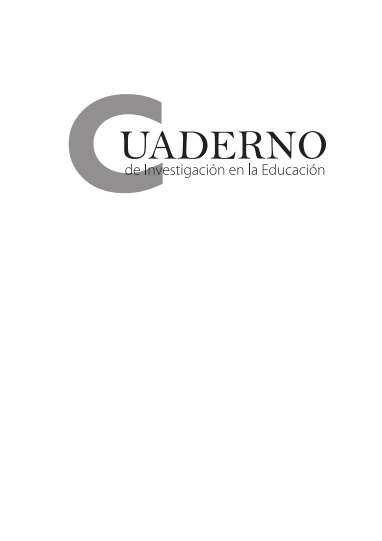Abstract
Research suggests that beginning teachers are not prepared to effectively use technology in their classrooms. While many efforts have focused on preparing pre-service teachers to integrate technology in their teaching, little research has focused on identifying internal issues impeding teacher education faculty‘s ability to integrate technology in their teaching. Therefore, the purpose of this study was to identify internal issues that teacher education faculty have when integrating technology in their teaching. Moreover, by identifying these points, discussions emerged, leading to strategies that can be used to systemically support instructors to integrate technology in their teaching. A questionnaire was used to collect data. Some results revealed that faculty limitedly used technologies in their teaching, with the desire to integrate technology at a higher level. In addition, internal processes, continuous education and time were just a few of the barriers that impeded the integration process.
Cómo citar:
Chung, M., Yeh, H.-T., Anderson, M., & Chavez, L. (2014). Identifying issues impeding teacher education faculty‘s ability to integrate technology in their teaching.. Cuaderno de Investigación en la Educación, 29, 59-74. Recuperado a partir de https://revistas.upr.edu/index.php/educacion/article/view/13254
References
Anderson, T., Varnhagen, S., & Campbell, K. (1998). Faculty adoption of teaching and learning technologies: Contrasting earlier adopter and mainstream faculty. The Canadian Journal of Higher Education, 28(2,3), 71-98.
Blackwood, N. A. (2001). A study of the relationship between characteristics of faculty members in West Virginia Colleges and their level of implementation of information technology. (Unpublished doctoral dissertation). West Virginia University, West Virginia.
Caffarella, R. S., & Zinn, L. F. (1999). Professional development for faculty: A conceptual framework of barriers and supports. Innovative Higher Education, 23(4), 241-254.
Casmar, S. P. (2001). The adoption of computer technology by faculty in a college of education: An analysis of administrative planning issues. (Doctoral dissertation). Available from ProQuest Dissertations and Theses database. (UMI No. 3025011).
Cornell, R. (1999). The onrush of technology and education: The professor‘s new dilemma. Educational Technology, 39(3), 60-64.
Davis, N. (1999). Why should IT in teacher education have a global dimension? In J. Price, J. Willis, D. A. Willis, M. Jost, S. Boger-Mehall (Eds.), Technology and teacher training annual – 1995 (pp. 795-800). Charlottesville, VA: Association for the Advancement of Computing in Education.
Dawson, V. (2008). Use of information communication technology by early career science teachers in Western Australia. International Journal of Science Education, 30(2), 203-219.
Georgina, A. D., & Olson, R. M. (2008). Integration of technology in higher education: A review of faculty self-perceptions. Internet and Higher Education, 11, 1-8.
Goktas, Y., Yildirim, S., & Yildirim, Z. (2009). Main barriers and possible enablers of ICTs integration into pre-service teacher education programs. Educational Technology & Society, 12(1), 193-204.
Hearne, J. L., Henkin, A. B., & Dee, J. R. (2011). Enabling initiative and enterprise: Faculty-led course redesign in a STEM discipline. Educational Research Quarterly, 35(1), 33-62.
Kirschner, P., & Selinger, M. (2003). The state of affairs of teacher education with respect to information and communications. Technology, Pedagogy and Education, 12(1), 5-17.
Koehler, M., & Mishra, P. (2009). What is technological pedagogical content knowledge (TPACK)? Contemporary Issues in Technology and Teacher Education, 9(1), 60-70.
Miller, M. T., Pope, M. L., & Steinmann, T. D. (2005). Dealing with the challenges and stressors faced by community college students: The old try. Community College Journal of Research and Practice, 29(1), 63-74.
Peluchette, J. V., & Rust, K. A. (2005). Technology use in the classroom: Preferences of Management faculty members. Journal of Education for Business, 80(4), 200-205.
Prenksy, M. (2001). Digital natives, digital immigrants. On the Horizon, 9(5), 1-6.
Sang, G., Valcke M., van Braak, J., Tondeur, J., & Zhu, C. (2010). Factors associated with the integration of ICT into Chinese primary school classrooms: An interplay of teacher-related variables. Journal of Computer Assisted Learning, 27(2), 160-172.
Semary, H. (2011). Barriers to the effective use of technology in education: Case study of UAE University. Asian Transaction on Science & Technology, 1(5), 22-32.
Tearle, P., & Golder, G. (2008). The use of ICT in the teaching and learning of Physical Education in compulsory education: How do we prepare the workforce of the future? European Journal of Teacher Education, 31(1), 55-72.

This work is licensed under a Creative Commons Attribution-NonCommercial 4.0 International License.
Copyright (c) 2014 Cuaderno de Investigación en la Educación

